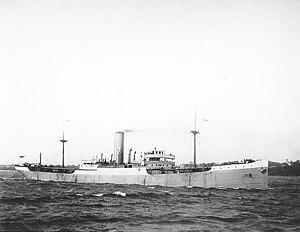
USS West Alsek (ID-3119) was a cargo ship in the United States Navy during World War I. She had been built as SS West Alsek for the United States Shipping Board (USSB) as part of the West boats, cargo ships built on the West Coast of the United States. She sailed on two voyages for the U.S. Navy before she was decommissioned after the Armistice.
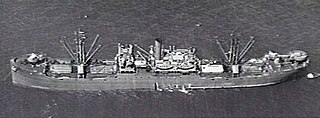
USS West Gate (ID-3216) was a cargo ship for the United States Navy during World War I. The ship was laid down as SS War Agate, but she was launched in January 1918 as SS West Gate instead.

USS Oregonian (ID-1323) was a cargo ship that served in the United States Navy from 1918 to 1919.

USS Edgar F. Luckenbach (ID-4597) was a cargo ship and troop transport that served in the United States Navy from 1918 to 1919.

USS Howick Hall (ID-1303) was a cargo ship launched in 1910 and in service till 1942. She served in the United States Navy from 1918 to 1919; she was lost in the German bombing of a British Arctic convoy in 1942.
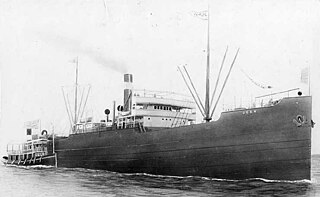
USS Jean (ID-1308) was a cargo ship that served in the United States Navy from 1918 to 1919.

USS Texan (ID-1354) was a United States Navy cargo ship and troop transport in commission from 1918 to 1919.
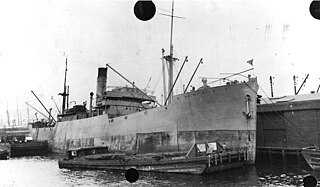
USS Craster Hall (ID-1486) was a cargo ship that served in the United States Navy from 1918 to 1919.

USS Munplace (ID-2346) was a cargo ship that served in the United States Navy from 1918 to 1919.

USS Munsomo (ID-1607) was a cargo ship that served in the United States Navy from 1918 to 1919.

USS Stephen R. Jones (ID-4526) was a cargo ship that served in the United States Navy from 1918 to 1919.

West Madaket was a steam cargo ship built in 1918–1919 by Skinner & Eddy Corporation of Seattle for the United States Shipping Board as part of the wartime shipbuilding program of the Emergency Fleet Corporation (EFC) to restore the nation's Merchant Marine.
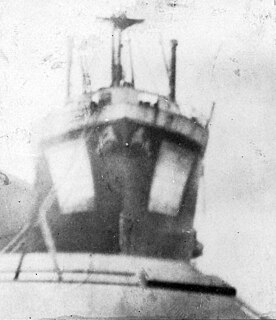
The second USS Rondo (ID-2488) was a United States Navy cargo ship in commission from 1918 to 1919.

USS West Elcasco (ID-3661) was a steel-hulled cargo ship which saw service as an auxiliary with the U.S. Navy in World War I and as an Army transport in World War II.
USS Teresa was a cargo ship that served in the United States Navy from 1918 to 1919.

USS M. J. Scanlon (ID-3513) was a United States Navy cargo ship in commission from 1918 to 1919.
The first USS West Point (ID-3254) was a cargo ship of the United States Navy that served during World War I and its immediate aftermath.
USS Western Spirit (ID-3164) was a cargo ship of the United States Navy that served during World War I and its immediate aftermath.`

USS Western Light (ID-3300) was a cargo ship of the United States Navy that served during World War I and its immediate aftermath.`

USS Saetia (ID-2317) was a United States Navy cargo ship in commission in 1918 that was sunk during World War I.
